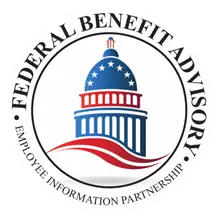If you’re going to use the individual TSP funds to build your portfolio, you’ll want to rebalance periodically. Rebalancing is the process of bringing your portfolio back into line with the overall allocation you want to maintain based on the level of return and risk you’re targeting.
The longer one has until retirement, the more risk you can take, and recover. The very long range we always recommend the Lifestyle funds appropriate with your remaining term of service. Our articles are directed to those who are nearing or near retirement wherein risk and recovery are no longer an option.
Rebalancing is especially important when one particular asset class has risen or fallen sharply, particularly relative to other asset classes. For example, the stock market has soared since April 2020, after the markets panicked reaction, the pandemic began to subside and rose again in April 2021, then subsided once again. The TSP history is full of gains and losses. Through personal experience, my firm has visited with hundreds of federal employees who relate to enormous losses, and a delay of retirement by many years.
Let’s look at what the TSP Funds consist of:
- Individual Funds
- Government Securities Investment (or G) Fund
short-term U.S. Treasury securities
Risk level: Low
- Fixed Income (or F) Investment Fund
Risk level: Low-medium
- Common Stock Index (or C) Investment Fund
Risk level: Medium
- Small Cap Stock Index (or S) Investment Fund
Risk level: Medium-high
- International Stock Index (or I) Investment Fund
(Europe, Australasia, Far East) Index
Risk level: High
- Government Securities Investment (or G) Fund
- Lifecycle (L) Funds
The Lifecycle Funds are a diversified mix of the five Individual Funds. The idea behind Lifecycle funds is to offer a single investment that is diversified and is designed to offer the highest potential return for a given level of risk. Traditionally, the longer your investment horizon, the greater the weight of stocks can be in your portfolio. More stocks means higher returns over the longer term, but it also means your portfolio will lose more in bear markets.
There are 10 TSP Lifecycle Funds:
- L Income Fund
Risk level: Low
L 2025 Fund
Risk level: Low-medium
L 2030 Fund
Risk level: Medium
L 2035 Fund
Risk level: Medium
L 2040 Fund
Risk level: HIGH- L 2050 Fund
Risk level: High
L 2055 Fund
Risk level: High
L 2060 Fund
Risk level: High
L 2065 Fund
Risk level: High
- L 2050 Fund
- “What happens to my TSP if I don’t utilize it during retirement?”
For married TSP participants who pass with their spouse as the primary beneficiary is retitled in your spouse’s name as a Beneficiary Participant TSP Account (so long as it has a minimum remaining balance of $200). Wherever the funds are deposited, your spouse will have to re-evaluate where the fund will be allocated as the account, TSP is automatically reallocated into the Lifecycle Fund that is most appropriate for your spouse’s age. Spousal beneficiaries generally have the same investment funds and similar distribution options as the original TSP owner.
A Beneficiary Participant TSP Account allows the spousal beneficiary to continue deferring taxes on the majority of the account – which is informally known as “stretching” the tax liability – over the rest of his or her life expectancy, however, for the children, mom or Dad or brother or sister, the ‘stretching’ is another story.
Here is where the government’s plan for taking a chunk from the TSP/IRA/401(k) funds.
If no further planning is done, then each of your children, when the spouse dies, or if no spouse the named beneficiary would receive 100% of the TSP as taxable income. These distributions would skyrocket each child into the 35% marginal tax bracket for that year. If the kids have their own careers, then their household income gets added to the taxable TSP distribution and could increase their marginal tax bracket even further! Let’s also assume they live in a state that has a state income tax of 5%. This means the combined tax rate could be as much as 40% (35% federal, 5% state), a whopping tax bill!


